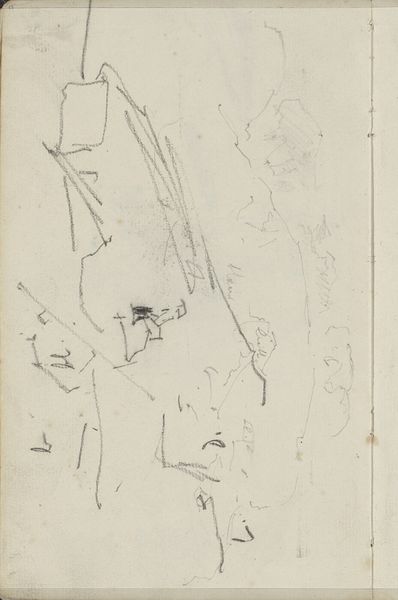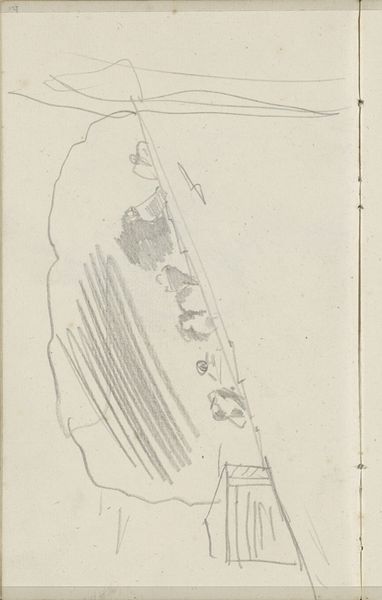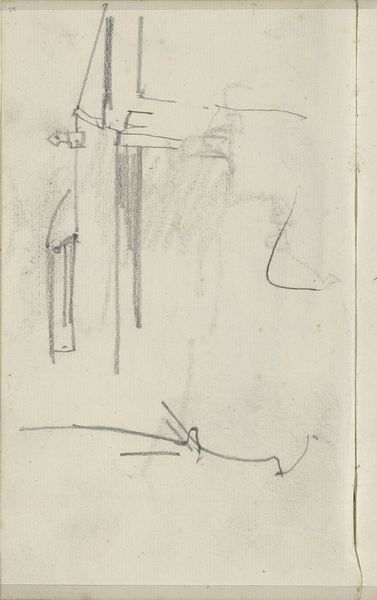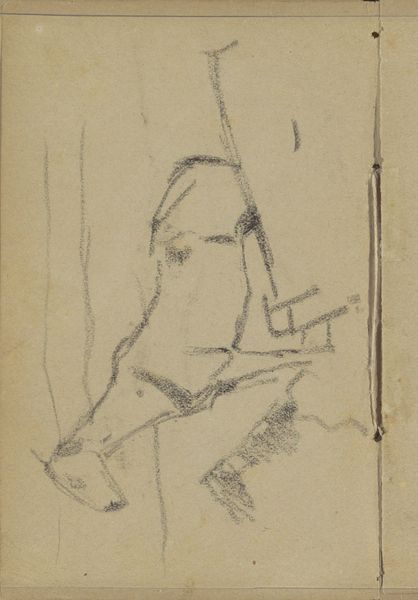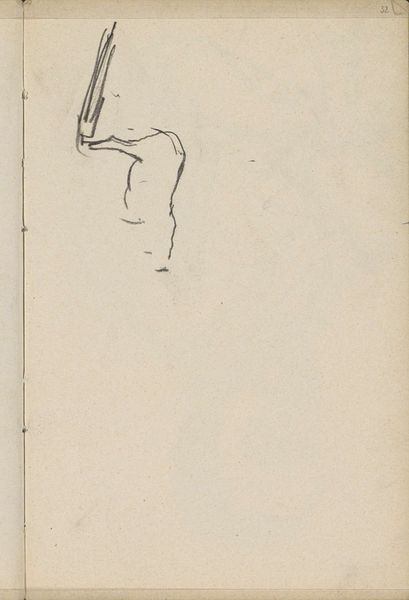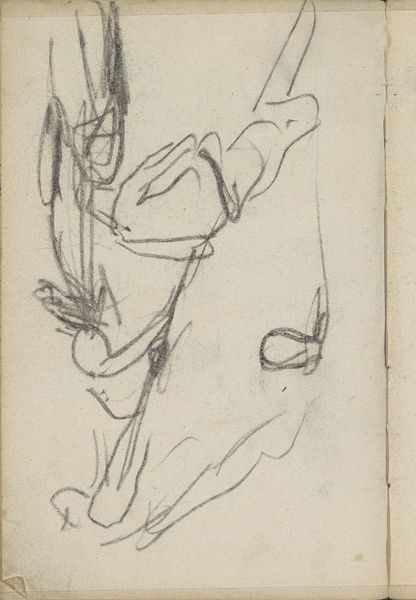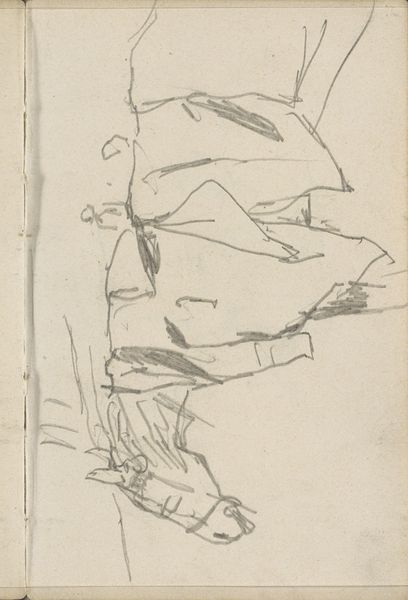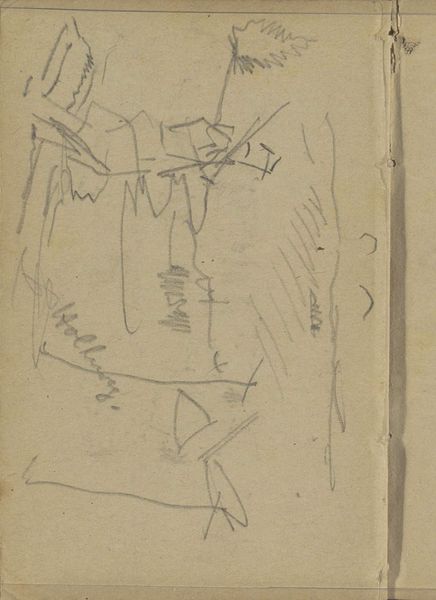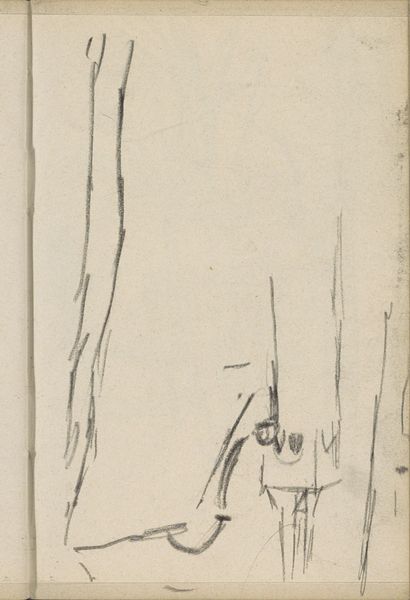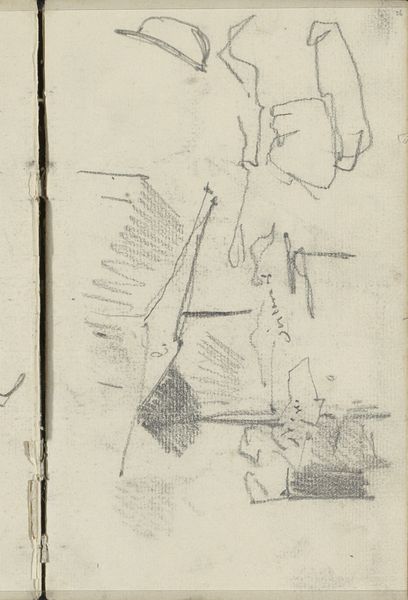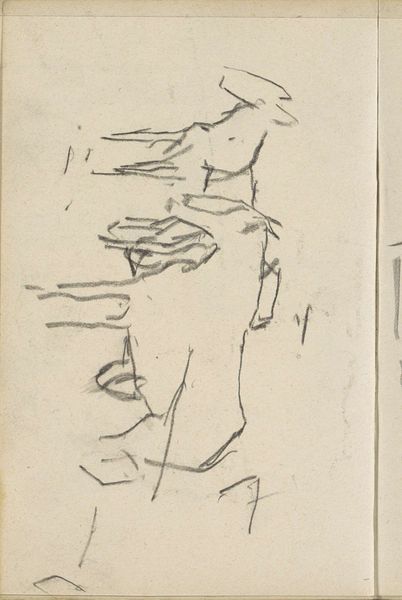
drawing, paper, pencil
#
drawing
#
impressionism
#
paper
#
form
#
pencil
#
line
#
cityscape
#
building
Copyright: Rijks Museum: Open Domain
Curator: Welcome. We’re looking at a drawing by George Hendrik Breitner entitled "Studie, mogelijk van daken met een wolkenlucht," which translates to "Study, possibly of roofs with a cloudy sky." Breitner likely sketched this work between 1880 and 1882. Editor: It's wonderfully minimal. The smudged pencil against the stark paper evokes a feeling of transience, as if this cityscape is merely a fleeting memory captured in the moment. It also brings to my mind the industrialization period in Europe with a focus on the development of large-scale architectural achievements like houses and towers to host a massive population migration from rural lands into cities. Curator: Absolutely. And if we consider that a “study” is, by its nature, preliminary, we might see this as Breitner working through impressions of Amsterdam’s quickly changing skyline. The visible structures evoke both familiarity and alienation given the fast growth in architecture to accommodate a major labor force back then. Editor: I think you nailed it, focusing on the rapid urban transformations. We also have to take into consideration how class divisions began in these areas to provide adequate workforce. Did Breitner intend for the work to spark such reactions? Are his personal opinions evident here in how buildings are visually emphasized? Curator: That’s the complexity, isn’t it? The Impressionists weren’t necessarily overt political commentators. Breitner was captivated by movement and light. It makes one consider how buildings and architectures have altered the sense of security in working class areas through time, how visual symbols transformed people's mindsets about identity, labor and value, or how economic value of one structure became culturally superior than another. But this artistic era can serve as reference of such circumstances. Editor: Perhaps not overtly, but I think there’s an inescapable dialogue occurring between aesthetics and the socio-political landscape, given his chosen subjects. I appreciate how art from this era depicts a collective effort, yet many people involved are rendered invisible. Curator: A perfect encapsulation of this work’s emotional tug-of-war! It serves as both documentation of a specific time and serves as an introspective, self-reflection across generations. Editor: Right, so, when we contemplate the symbolic role of such art in our present day, it brings into question our social norms regarding structures. Thanks for sharing your knowledge, I find my perception expanded a bit!
Comments
No comments
Be the first to comment and join the conversation on the ultimate creative platform.
